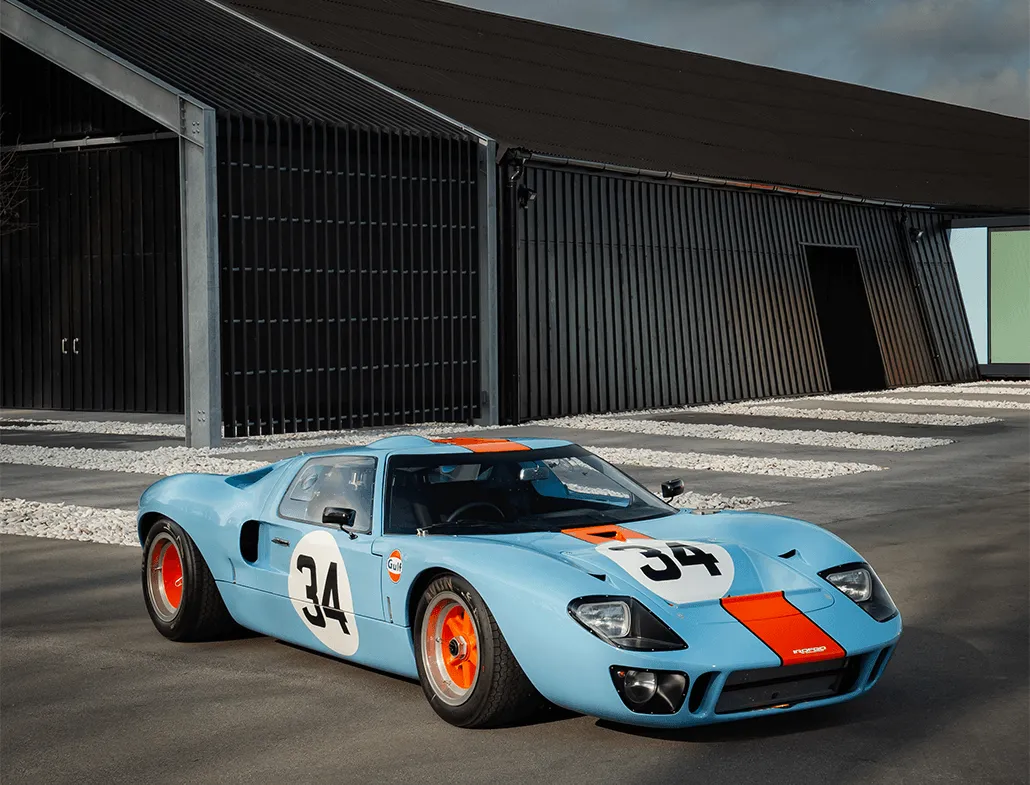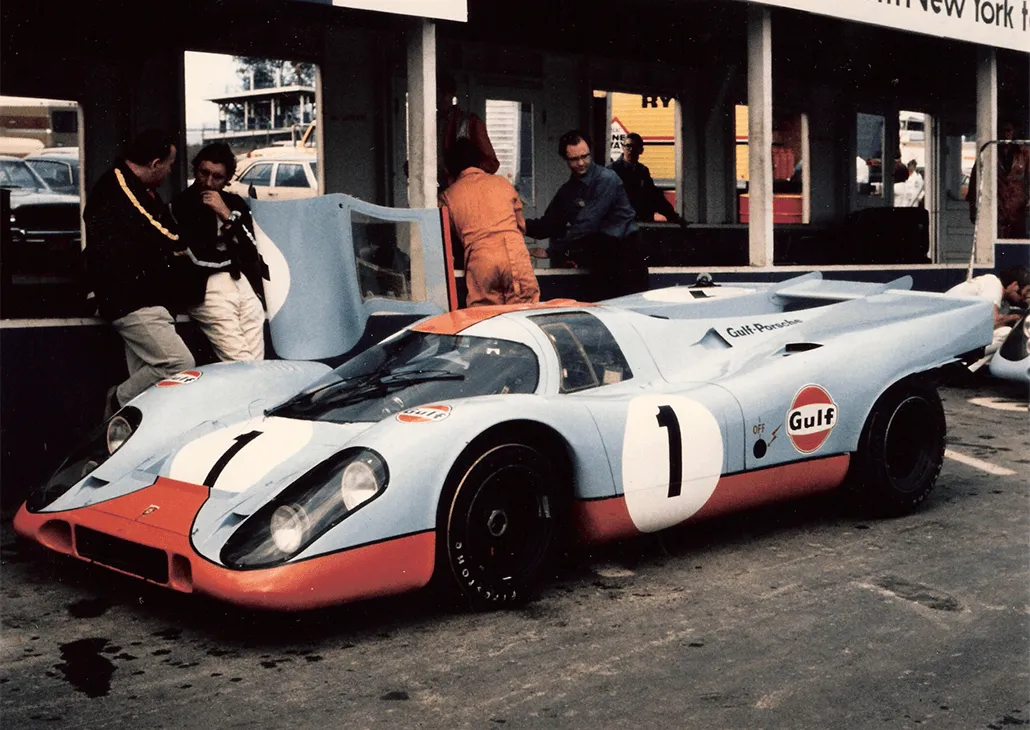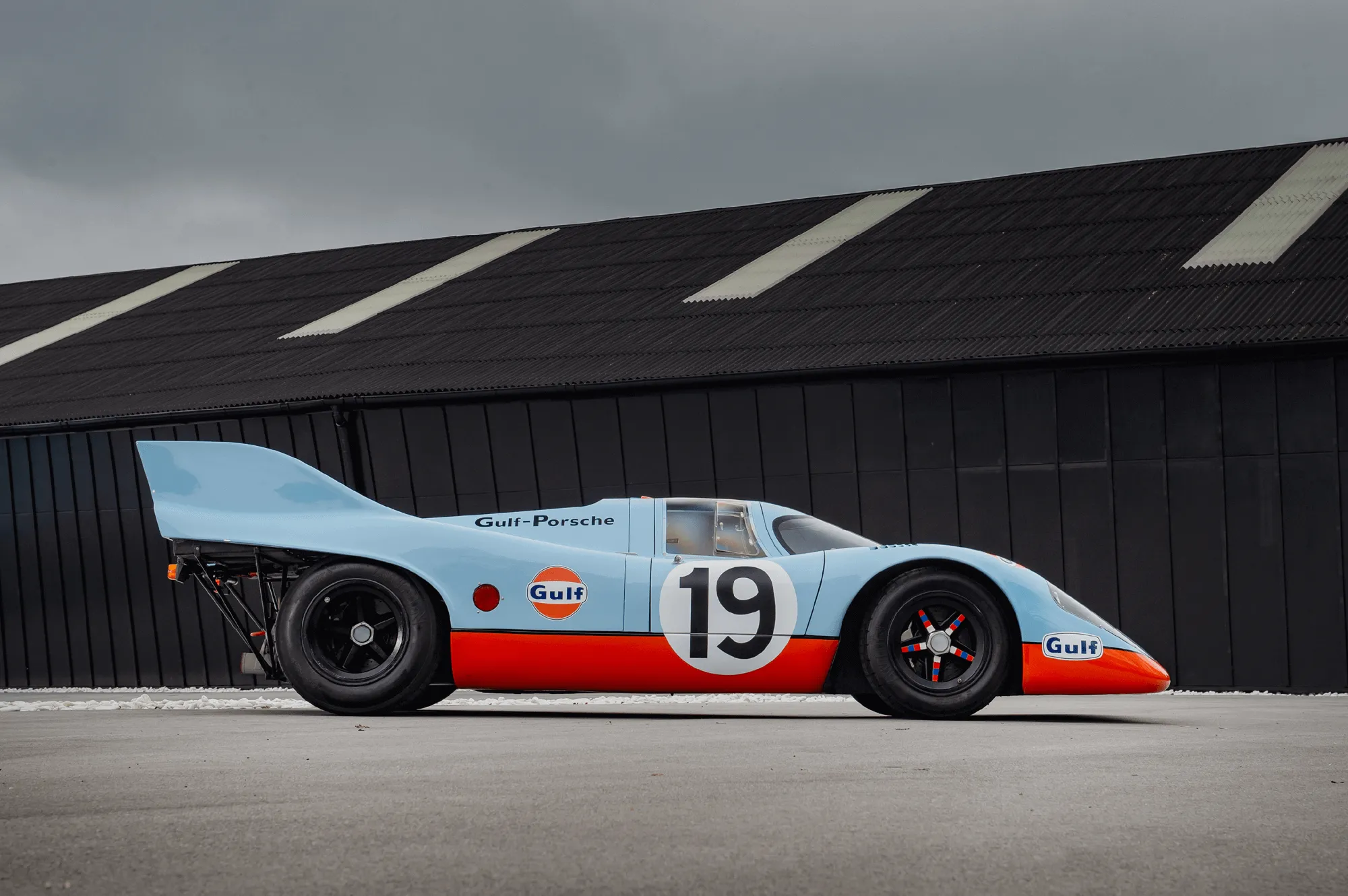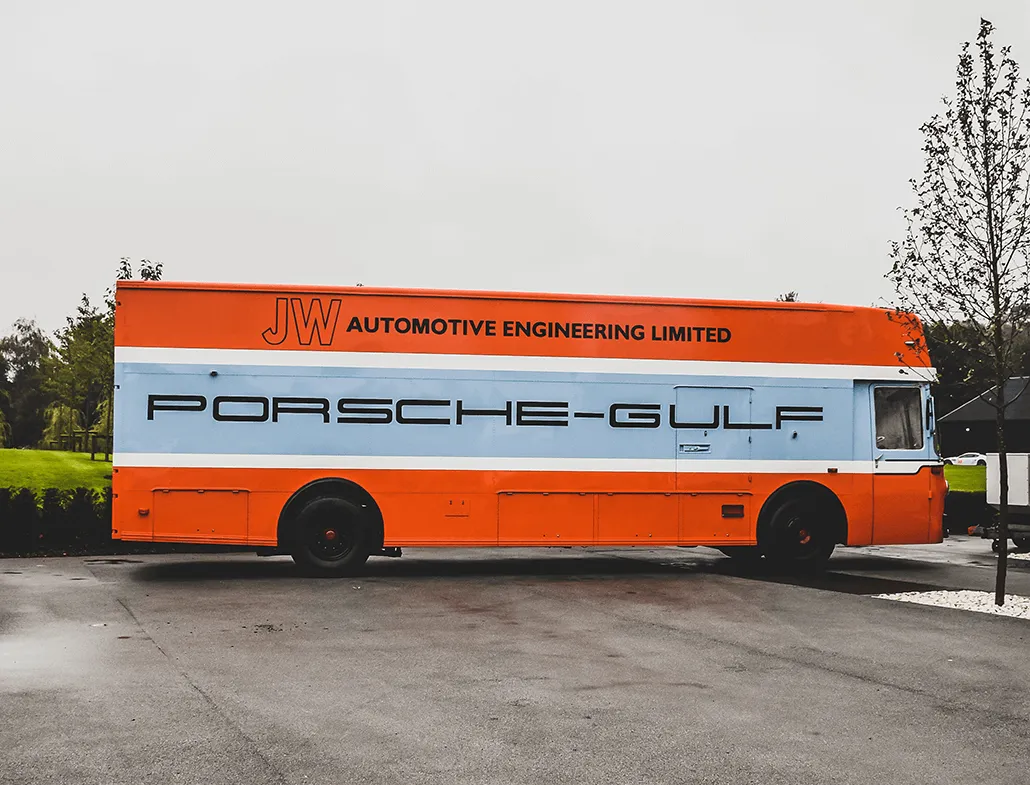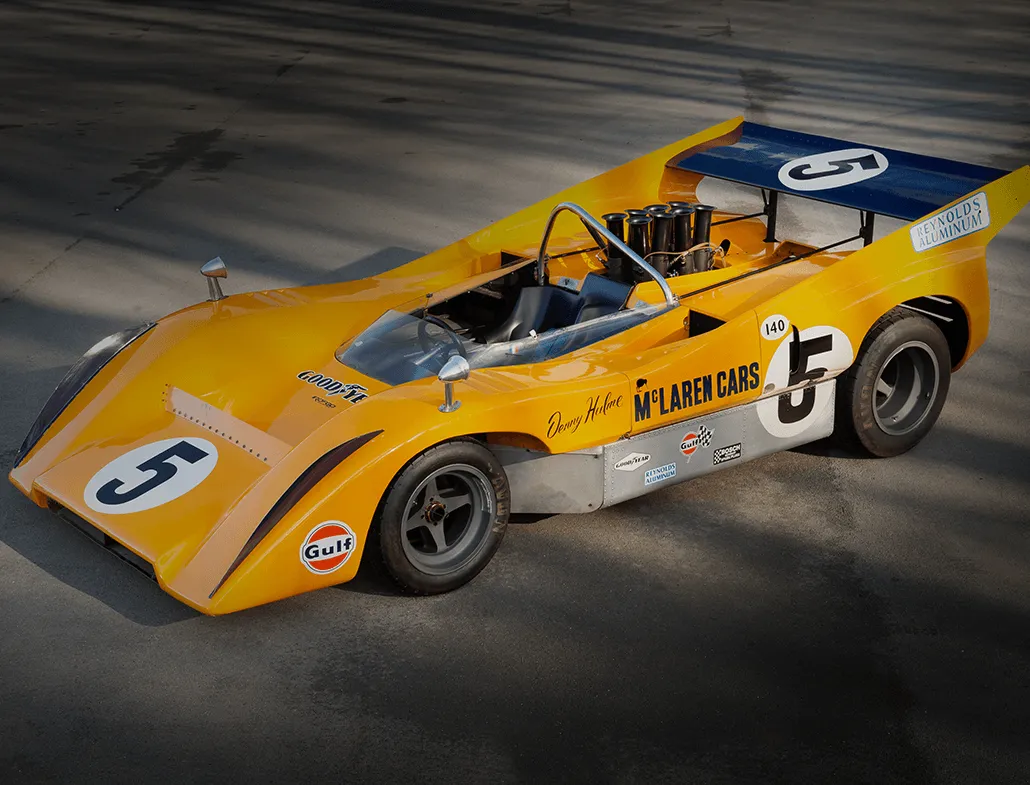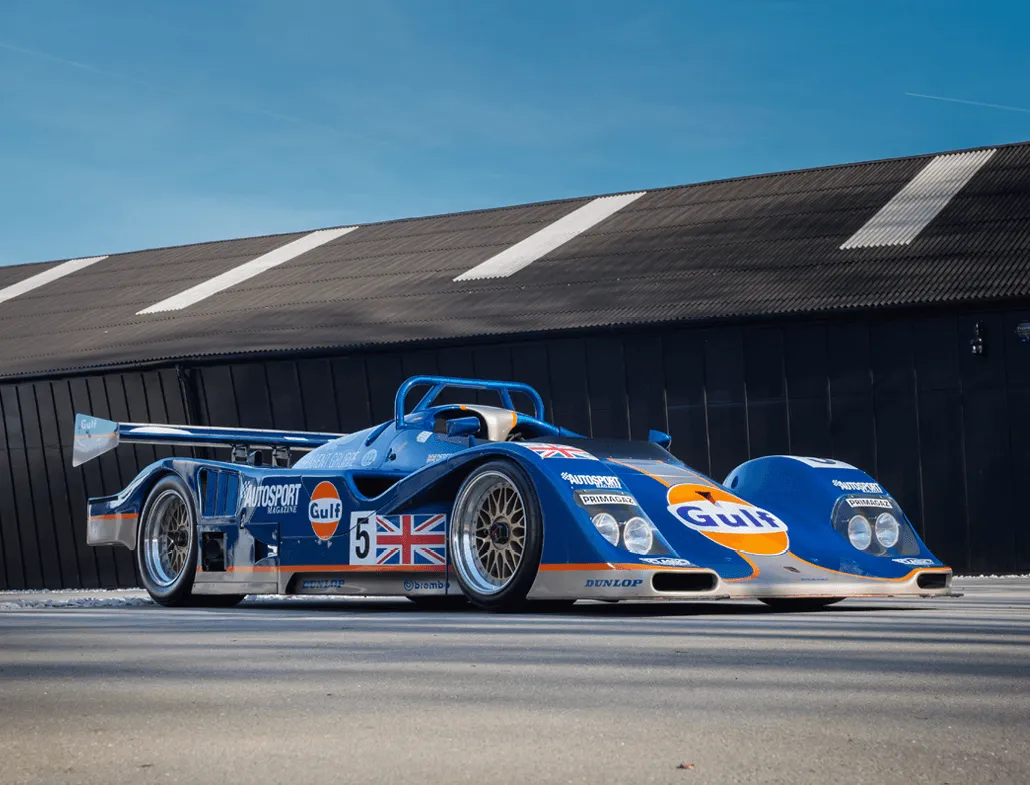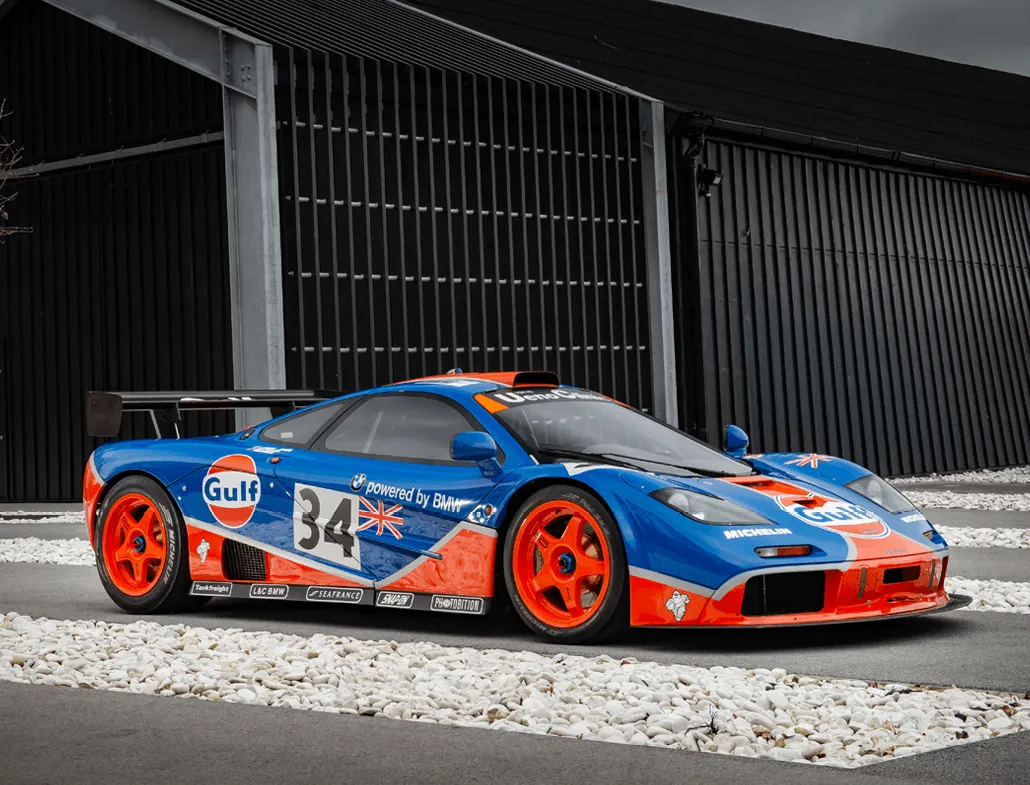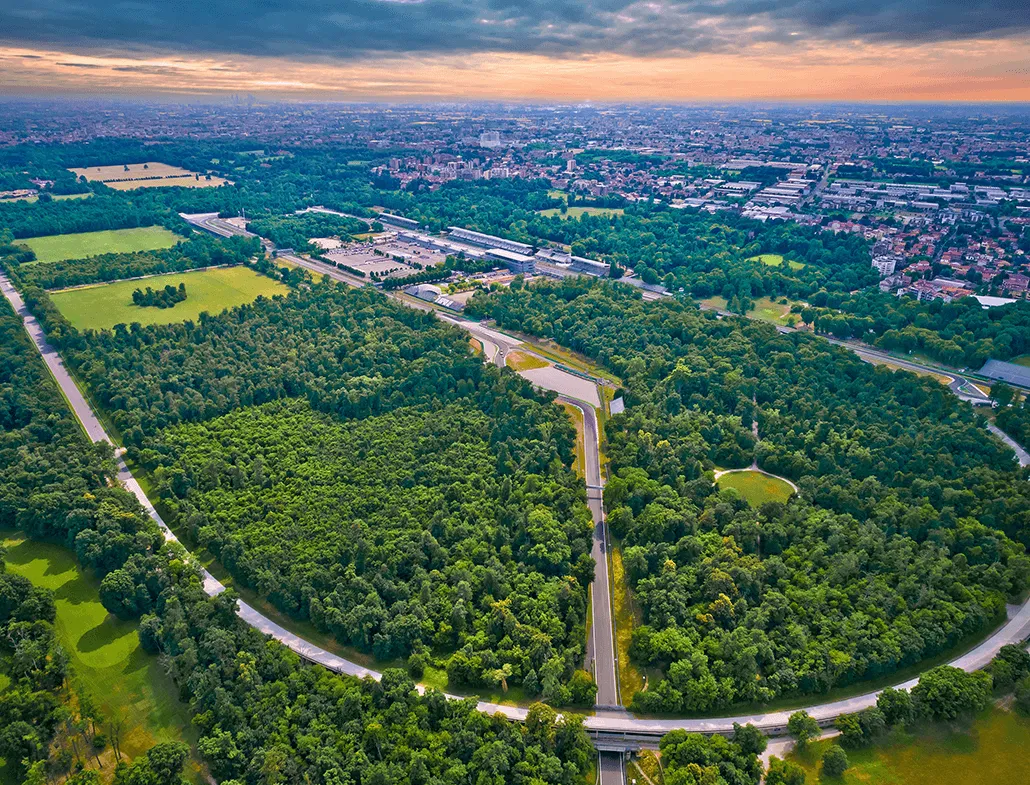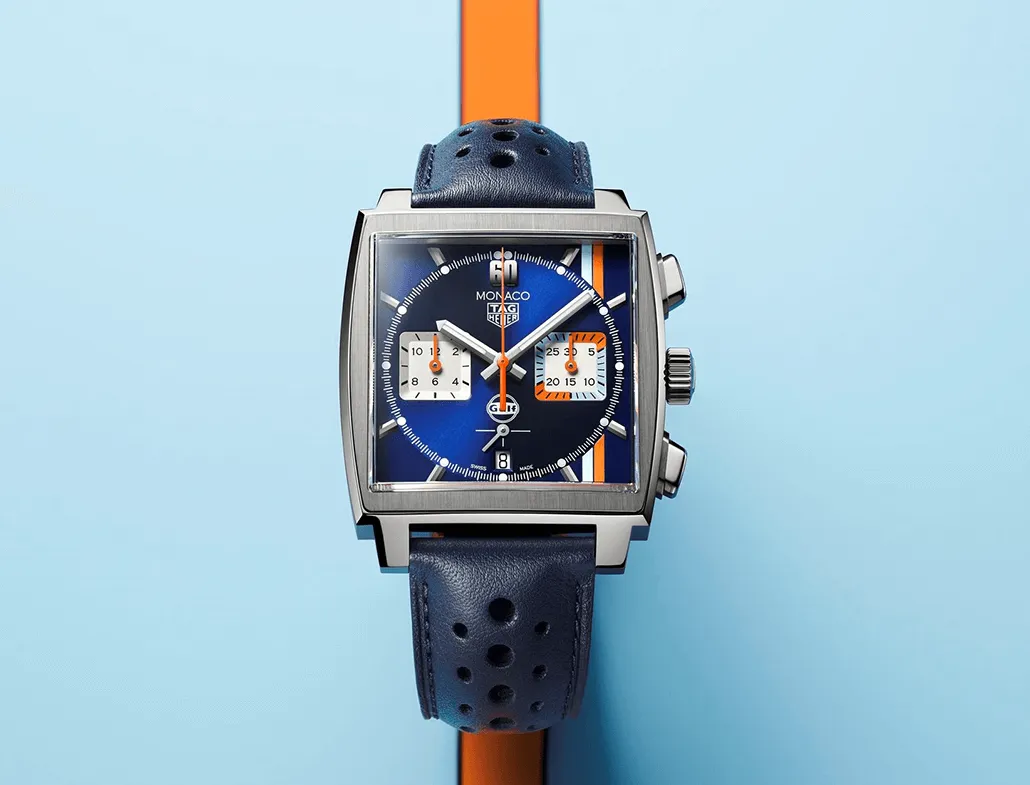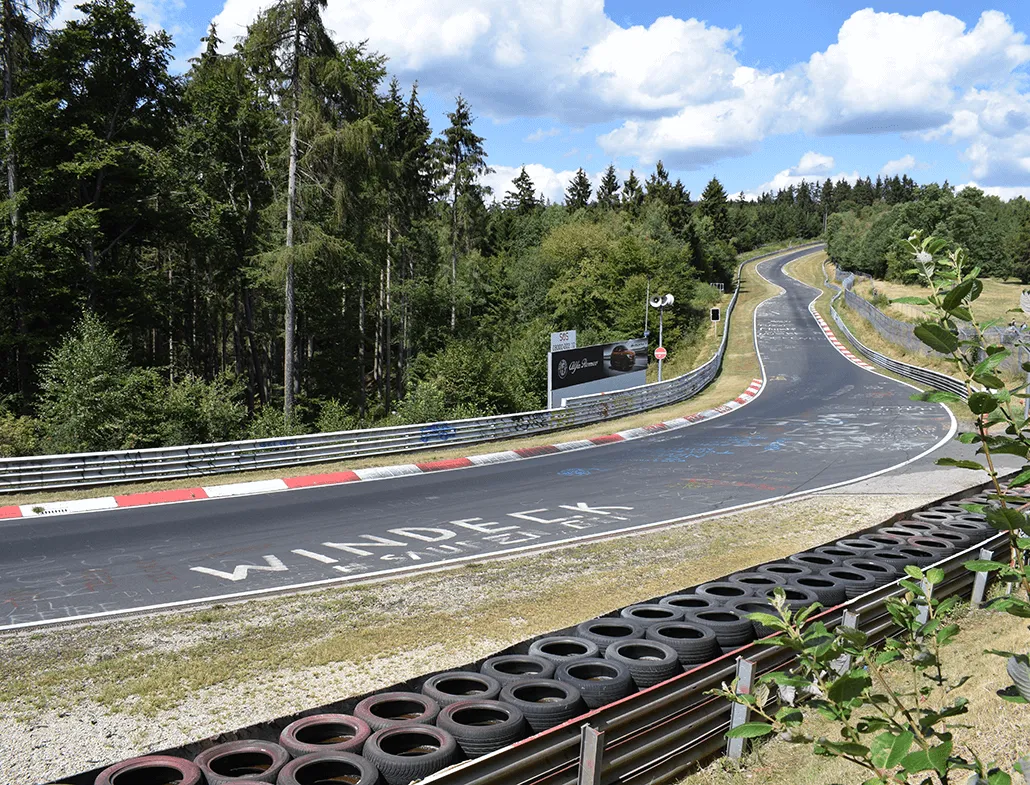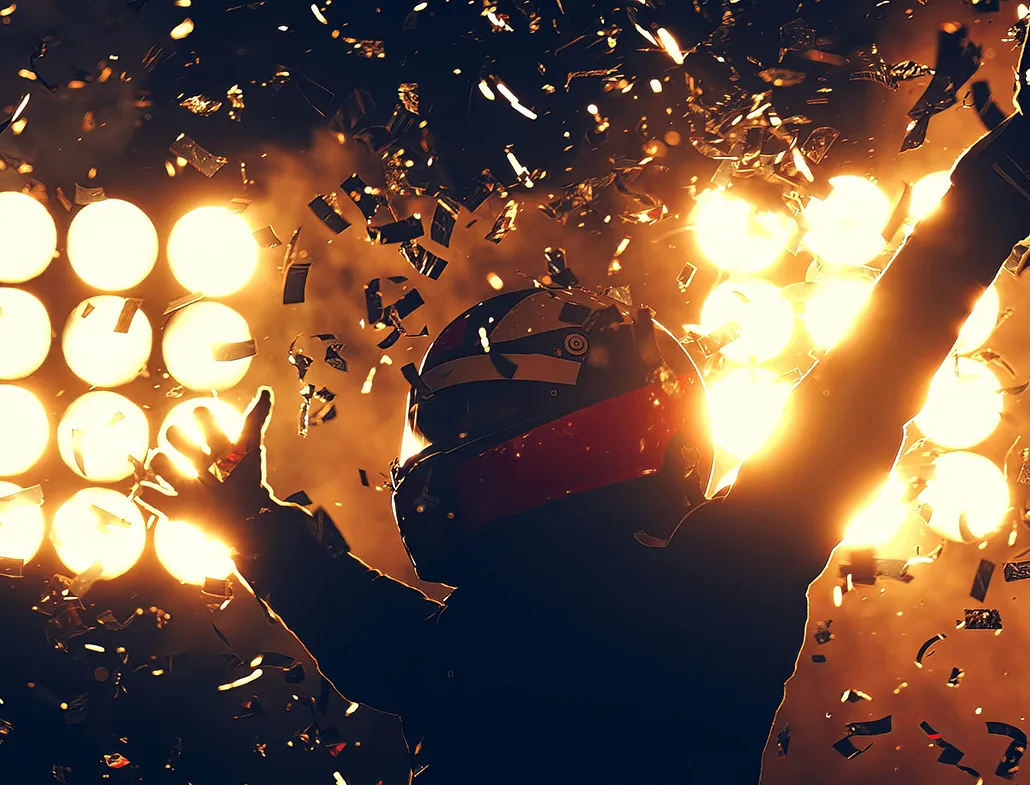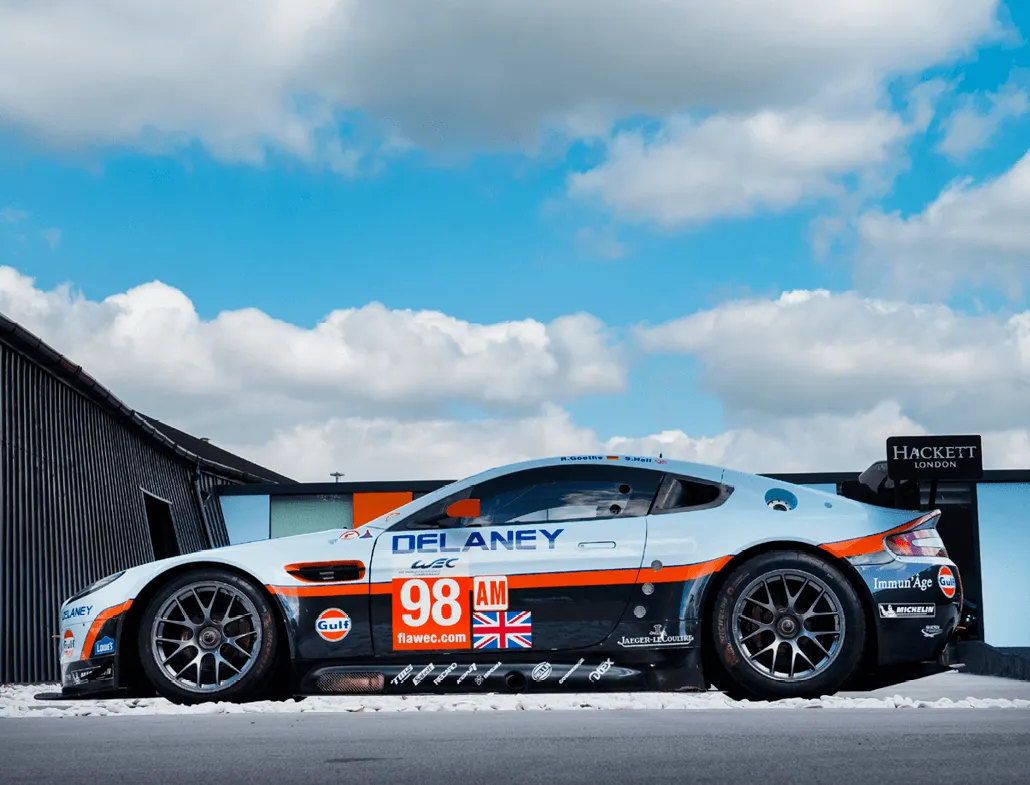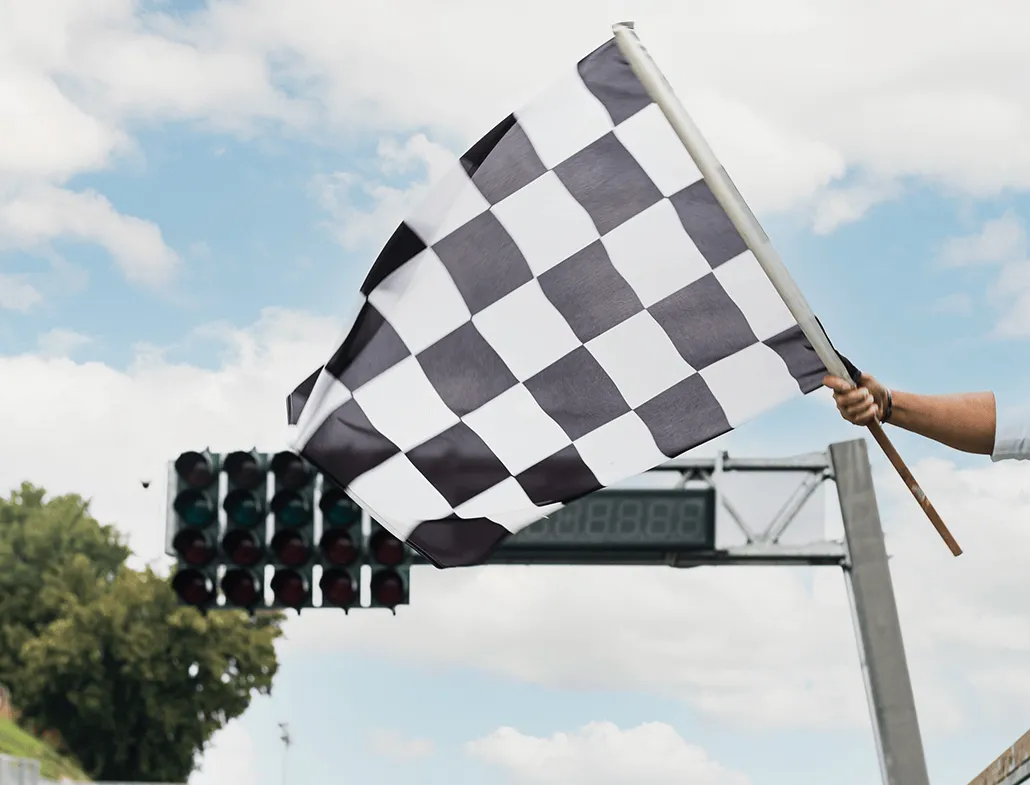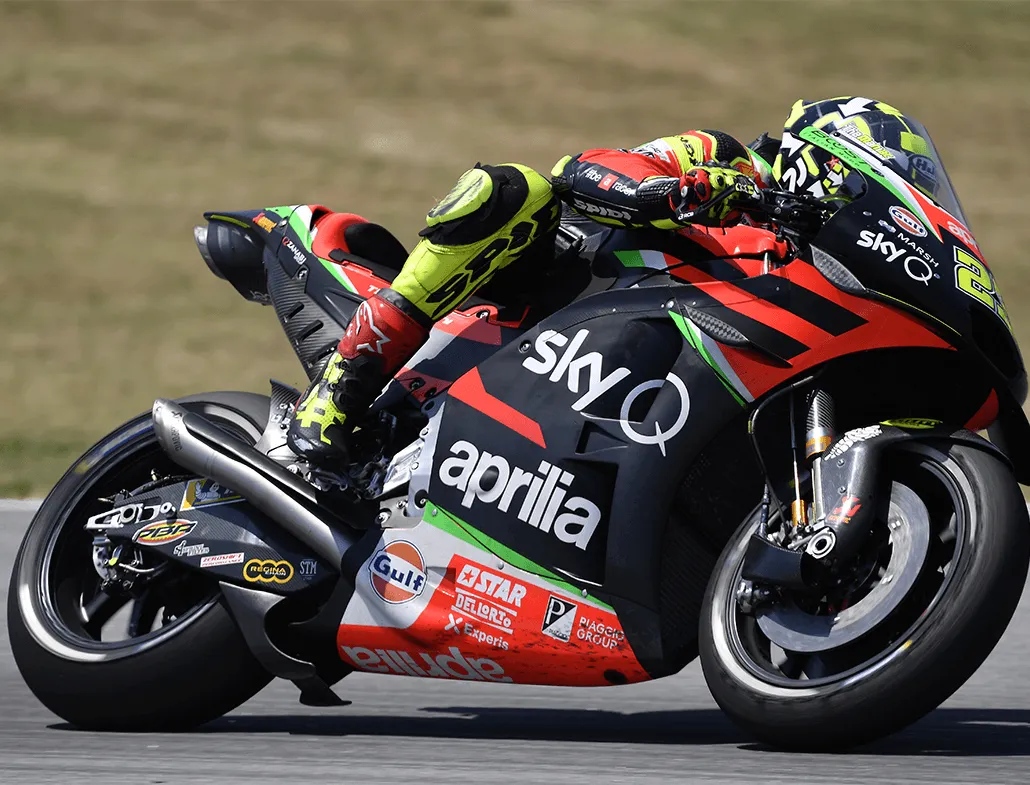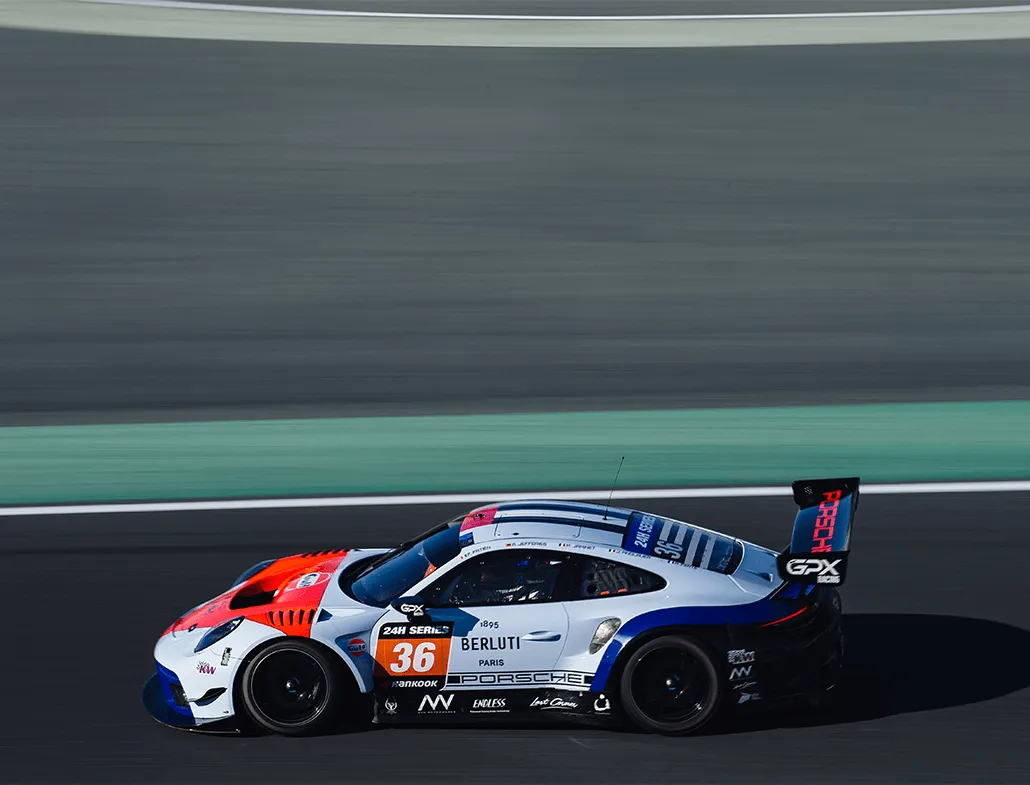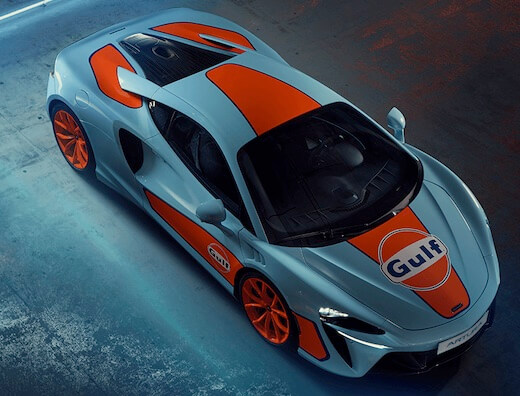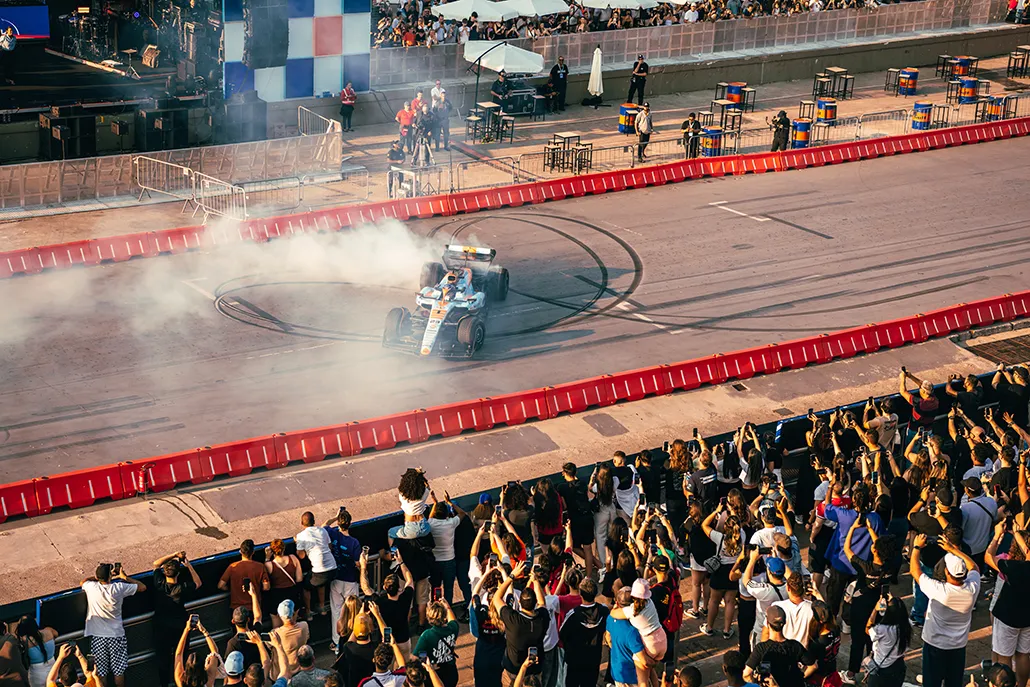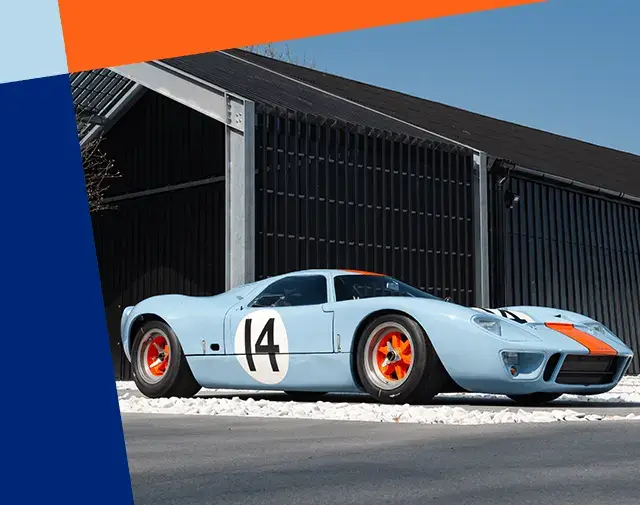
Motorsport
Gulf in Racing – Our rich motorsport history
Gulf has always had a keen interest in motorsport - it's in our veins. Over the years we have experienced so many monumental moments that will forever have a place in the hearts of motorsport fans all over the world.
Gulf has had a rich motorsport history for many years and our livery and brand colours adorning Gulf cars have become iconic amongst racing fans. For all of the racing enthusiasts out there, here’s a timeline of Gulf cars in motorsport over the years...
1936 - 1937 Gulf-backed Morman Meteor:
Gulf took its first tentative step into motorsport by backing the Morman Meteor, an advanced Dusenberg-based record-breaking racer using a 700bhp Curtis V12 aero engine.
The Gulf-sponsored Meteor broke an impressive number of records at the Bonneville Salts Flats in Utah. It took both the 24-hour record at a speed of 153.8 mph and the 48 hours record at an average of 148.6 mph. In 1937, the improved Morman Meteor II achieved a new record-breaking speed of 157.3 mph.
1965-75 - Gulf-JW Automotive:
It was during the late 60s and early 70s that the Gulf Oil brand came to international prominence through the highly successful financial and technical sponsorship of a number of major-team motor racing programs.
We achieved notable early global exposure when our Vice President, Grady Davis, linked the Gulf brand up with John Wyer (of JW Automotive Engineering) to mastermind Gulf’s participation in the World Endurance Championship (WEC).
The Gulf-JW Automotive team became a legendary force between 1967 and 1975 with the Ford GT40, Porsche 917 and Mirage competition cars. Gulf achieved victory at the famous Le Mans 24 Hours race in 1968, 1969 and 1975, as well as taking World Championship Sportscar honors.
It was also during this period that the now iconic Gulf blue and orange racing colours made their first appearance. Gulf’s corporate livery of dark blue and orange was considered too muted for race team Gulf car colours, so powder blue and orange (the colours of the recently acquired Wilshire Oil Company) were chosen to reflect the vibrancy of the brand.
1967 - Gulf-JW Automotive Achieves its First Race Victories
The J W Automotive-prepared orange and blue Mirage-Ford M1 took its maiden competition victory at the Spa 1000 km race in Belgium, driven by Jackie Ickx and Richard Thompson.
Ickx took a further victory in the same Gulf car at the 1967 Sportscar race in Karlskoga, Sweden, with Jo Bonnier and Paul Hawkins repeating victory for the Mirage-Ford M1 just one week later at Skarpnack, Sweden. The Mirage-Ford took its final win of the 1967 Sportscar season at the South African Kyalami Nine Hours race, with Jacky Ickx and Brian Redman sharing the spoils.
1968 - Gulf-JW Automotive Ford GT40 Le Mans Victory
Ahead of the famous 1968 Le Mans 24 Hour race and victory, the Gulf-JW Automotive team had already taken an impressive seven wins in that year’s Sportscar Championship.
The first of these was the Brands Hatch Six Hours in April, through to the Watkins Glen Six Hours in the USA, where the team took its first-ever one-two finish.
Held later in the year than its traditional mid-June slot, on 29 September 1968, Gulf car number 9, the Gulf-JW Automotive Ford GT40, wearing its distinctive Gulf livery, took Gulf’s first Le Mans victory.
1969 - Gulf-JW Automotive Ford GT40, Consecutive Le Mans Victory
The 1969 Sportscar Series brought more victories for the Gulf-JW Automotive team with the team taking its second historic win at June’s Le Mans 24 Hour race.
Le Mans victory came to the Gulf team’s winning Jackie Oliver and Jackie Ickx duo at an average speed of 129.4 mph (208.250 km/h), covering 3,105.61 miles (4,998 kilometres).
The winner’s podium was shared with another Gulf-JW Automotive team car, the third-placed Number 7 Ford GT40 of David Hobbs and Mike Hailwood, separated by the second-placed Porsche 908.
1970 - Gulf-JW Automotive Porsche 917
With the victorious Ford GT40 getting a little old in competition terms, the Gulf-J W Automotive team changed its allegiance for the 1970 season. The stunning new Porsche 917 was naturally branded in the official iconic Gulf orange and racing blue livery. Lap records were quickly felled by the Gulf cars and race victories were numerous.
At the inaugural 1970-season race opener, the Daytona 24 Hours, the Gulf team gave the Porsche 917K its maiden race win with the trio of Rodriguez, Kinnunen and Redman taking the laurels.
The Gulf 917 went on to claim another seven wins during the season (with John Wyer altering the 917’s tail to improve its aerodynamics). It was joined by a works-entered Gulf Porsche 908/3 victory in the celebrated Targa Florio by Siffert and Redman.
1971 - Gulf-JW Automotive Porsche 917 and the Steve McQueen Le Mans Movie
The 1971 season saw the continuation of the Gulf-JW Automotive team’s winning streak with the Porsche 917K giving the first victory to the team’s latest recruit (in the Buenos Aires 1000 km). Englishman, Derek Bell, would go on to enjoy a long and successful racing career with Gulf. The team saw a further six Sportscar race wins during the season.
Significantly, 1971 also saw Gulf receive a major global awareness boost with the cinema release of Steve McQueen’s infamous Le Mans movie. This gave the Gulf Porsche 917 globally iconic status.
Filmed after the 1970 Le Mans 24 Hour race, throughout the movie McQueen (playing racing driver Michael Delaney) wore his Gulf-emblazoned Nomex fireproof racing overalls. He famously piloted an iconic blue and orange Gulf Porsche 917, car number 20.
Delaney crashes his Number 20 Porsche but is drafted in at the last hour to tackle his rival’s Ferrari 512 in another Gulf 917K team car, number 21.
1972 – 1975 - Gulf-JW Automotive form the Gulf Research Racing Company
With major technical changes being made to the Sportscar racing regulations for 1972, Gulf-J W Automotive dropped the newly banned Porsche 917 and introduced the new Ford Cosworth-powered 3-litre Gulf Mirage GR6. At the same time it also formed the new UK-based Gulf Research Racing Company.
Derek Bell was signed to share the Mirage GR6 with Dutch driver Gijs van Lennep. Each year showed improvement through the GR7 until the GR8 where the Gulf team only campaigned two races for the 1975 Sportscar season, taking a second at the Nurburgring 1000 km.
This was followed by Gulf’s third victory at the Le Mans 24 Hour race, with the winning team of Derek Bell and Jacky Ickx securing the top prize at the illustrious Sarthe circuit. The second team, GR8, took a much-deserved third place.
After achieving the Le Mans hat trick (temporarily) and taking three World Championship Sportscar honours, Gulf withdrew from endurance racing with little left to prove.
1968-74 - Gulf Team McLaren
In 1968 Gulf broadened its sponsorship activities by supporting McLaren in Can-Am, Indycar and Formula One racing. This partnership would last until 1974.
Over this hectic and hugely successful period, Gulf secured seven Formula One victories through McLaren and we also sponsored the 1969 Brabham F1 team cars.
Gulf’s link with McLaren in F1 continued successfully until the end of the 1973 season but Gulf Team McLaren is probably best remembered for its spectacular domination of the Can-Am series between 1968 and 1972. The team won 35 races and achieved a first-second combination on no fewer than 20 occasions.
The Gulf-supported McLarens actually saw their initial race wins and podium finishes in 1967. The fierce McLaren M6 took the chequered flag on more than half-a-dozen occasions, driven by the talented Kiwi racers Bruce McLaren and Denny Hulme.
1994 - Gulf Returns International Motor Sports with the Gulf Kremer Porsche Spyder K8
Following its third Le Mans victory, the Gulf-Mirage team was sold in the mid-1970s. It was almost 20 years before Gulf made a welcome return to the international motor racing arena with the Kremer Porsche Spyder K8.
In 1994, Gulf sponsored Derek Bell’s attempt to equal Jacky Ickx’s all-time record of six Le Mans 24 Hour successes. Driving the Gulf Kremer Porsche Spyder K8, Bell finished in a respectable sixth place on the famous Sarthe circuit.
1995-97 - Gulf Revives its McLaren Relationship with the F1 GTR
Gulf followed up its provisional return to motorsport with the Kremer Porsche, between 1995 and 1997. We renewed our successful historic link with McLaren with the racing version of its sensational F1 road car – the McLaren F1 GTR.
The Gulf x McLaren partnership briefly broke with tradition and ran in Gulf’s revised official corporate colours (dark blue and orange) for two of the three seasons, before reverting to the iconic Gulf racing colours in 1997.
During this time the team took nine race wins, including the Gulf-McLaren F1 GTR’s race debut at the 1995 Jerez 4 Hours. They also won the Global GT Championship title in 1996, with Ray Bellm and James Weaver.
2001 - Gulf Returns with the Audi R8
After a short break, still revealing its continued success, the famous blue and orange Gulf livery returned to international motor racing in 2001 as Gulf sponsored an Audi R8 run by Stefan Johansson. This winning combination became both the Driver and Team Class Champions in the 2001 European Le Mans Series.
2005 - Gulf and PBR Courages
2005 marked the opening of a new chapter in Gulf’s international motorsport history with Paul Belmondo Racing (PBR).
The PBR Courages took victory in the hard-fought LMP2 endurance racing category at both Monza and Silverstone. They ultimately finished on the podium a further three times during the 2005 season (including second and third in LMP2 at the Le Mans 24 Hours). The team and drivers only narrowly missed out on being LMP2 Champions, finishing the 2005 season in third.
2007 - Gulf Partners with Historic Motor Racing Timekeeper, TAG Heuer
Gulf’s commitment to unrivalled quality and endurance is mirrored in TAG Heuer's passion for precision engineering and bold design, making the partnership a natural fit for two brands synonymous with quality craftsmanship. Gulf has worked on a variety of projects with the iconic Swiss timepiece maker. The Gulf themed watches are some of the most sought-after pieces in TAG Heuer’s collection.
2007 - Gulf and the Kytek 07S LMP2:
With PBR not taking part in 2007, Gulf increased its support of the Barazi-Epsilon team in its challenge for glory in the Le Mans Series and the legendary Le Mans 24 Hours.
The team raced the all-new LMP2 contender from British constructor Zytek, the 07S. The Zytek had a mixed season but did win the LMP2 category at Silverstone and Interlagos and took second place at the Nurburgring. This resulted in Barazi-Epsilon finishing an impressive third in the LMP2 team standings for 2007.
2008 - Gulf and Aston Martin Racing
Gulf launched its fruitful partnership with Aston Martin Racing (AMR). This partnership of two iconic motorsport brands immediately captured the public’s imagination. It was further fuelled by victory for the blue and orange-liveried Aston Martin DBR9s in the GT1 category of the 2008 Le Mans 24 Hours.
2009 - Gulf Aston Martin Racing LMP1
2009 saw the unveiling of AMR’s LMP1 Le Mans prototype, the DBR 1-2. It led to a year of outstanding success with two Le Mans Series (LMS) race victories, an unbroken run of LMS podium finishes (including a 1-2-3 ‘clean sweep’ at the Nurburgring), plus three LMS titles for Teams, Manufacturers and Drivers.
AMR and Gulf also achieved further success at the end of the season at the inaugural running of the Asian Le Mans Series.
2011: Gulf AMR Middle East
In 2011, Mike Wainwright and Roald Goethe, gentlemen drivers with a huge passion for motorsport and the heritage the Gulf team now represents, formed a team under the name Gulf AMR Middle East. They competed in the Intercontinental Le Mans Cup, the precursor to the World Endurance Championship.
Once again, carrying the distinctive Gulf blue and orange livery with the support of Gulf Oil International, the pair contested the championship with an Aston Martin Vantage GT2.
2012-16 - Gulf AMR enters the World Endurance Championship (WEC)
Gulf AMR returned to top level racing and its GT roots with a full World Endurance Championship (WEC) season. 2012 saw the Gulf liveried competition Aston Martin Vantage GTE finish off the victory podium in the GTE Pro category.
First time out, the Aston Martin secured a fine runner up slot in the WEC opening round at the Sebring 12 Hours. A rare retirement at Spa was followed by third place at Le Mans, and then six consecutive podium finishes, which culminated in victory at the final round of the season in China.
This success continued through the 2013 and 2016 seasons, which saw Gulf with AMR continuing its winning ways in the WEC, in both the GTE Pro and GTE Categories.
2017 - Gulf Partners its First Motorcycle Racing Teams
In a first for Gulf, and worldwide Gulf motorsport enthusiasts, we agreed two partnerships for 2017 in the World Superbike Championship: Milwaukee Aprilia and Althea BMW.
2018 - Gulf and ROFGO celebrated 50-year Spa race victory
Gulf and its Heritage Partner, ROFGO, celebrated an incredible win at the world’s foremost GT race, the Spa 24 Hours. The Porsche 911 GT3R, run by the GPX race team for ROFGO, was entered into the race relatively late in the day, with support from Porsche who supplied three factory drivers especially for the event.
2020 - Gulf and McLaren Become Strategic Partners
Gulf has a deep-rooted and successful motorsport history with McLaren. The two brands revived their partnership in 2020 when McLaren Racing and McLaren Automotive teams announced their relationship with Gulf Oil official strategic partner
The retro livery marked McLaren’s tribute to Gulf’s timeless design while reflecting a racing connection that began in the days of team founder Bruce McLaren.
2021 - Gulf Historic Livery Returns to Formula One
Gulf Oil International unveiled an innovative special livery celebrating their historic partnership with a one-off iconic design for the 2021 Monaco Grand Prix.
This evocative livery marked the return to the sport with one of Formula 1’s most emblematic, recognisable and admired motorsport liveries of all time.
The McLaren F1 team carried Gulf’s racing blue colourway alongside an orange stripe, based closely on Gulf’s classic design, for the entire race weekend of the Monaco Grand Prix. The theme featured on both MCL35M race cars, the race suits of drivers podium-finishing Lando Norris and Daniel Ricciardo, the race team kit and across all team social media platforms.
2022 - Gulf Launches Limited Editions Sports Cars
In late 2022, thanks to its close partnerships with iconic British sports car brand McLaren Automotive, plus the classic electric car restoration company Everrati, a piece of motorsport history was announced in a trio of very special Gulf-liveried cars.
From the spectacular Gulf liveried McLaren Artura and the jaw-dropping limited edition McLaren Elva to the zero-emission Everrati Porsche 911 (964) restored into an electric vehicle, all three were made available in Gulf’s iconic blue and orange colours. Find out more about the latest Gulf livery available to the public.
2023 – Gulf Partners with Atlassian Williams Racing
In our first year with Atlassian Williams Racing, we made a bold statement—by handing creative control to the fans. Through our multi award-winning Gulf x Atlassian Williams Racing Fan Livery campaign we invited the global motorsport community to decide how our car would appear on the world stage. Over 180,000 votes were cast, and the result was unforgettable: the striking, fan-chosen design known as ‘Bolder than Bold’.
The livery debuted across the Singapore, Japan, and Qatar Grands Prix, with an accompanying cobranded merch range, so the fans could also buy a memento of the livery.
2024 – Gulf Speed Festival - Sao Paulo, Brazil
In 2024, we celebrated the winning design once again at the Gulf Speed Festival in Brazil—where Alex Albon gave fans a live performance they won’t forget, bringing ‘Bolder than Bold’ back to the track in spectacular style in front of 10,000 fans at the Sambadrome do Anhembi in Sao Paulo. The festival offered a diverse programme, ranging from thrilling Formula 1 car displays to live musical performances.
2025 – Gulf x Trackhouse MotoGP Team Partnership
In 2025 Gulf were proud to announce their partnership with the Trackhouse MotoGP Team. For the very first time in MotoGP history the iconic Gulf livery was displayed on the Trackhouse MotoGP’s Aprilia RS-GP25 bikes at the season’s first two rounds in Thailand and Argentina.
Together with the Trackhouse MotoGP Team, we’re setting out to create a partnership that reflects our shared drive, innovation, and passion for the sport.
Gulf X Atlassian Williams Racing Presents Driven By Words
This is more than a livery, it’s a tribute to the heartbeat of racing: the fans. Every curve of the FW47 carries 493 words in 12 languages, chosen by those who live and breathe speed, legacy, and emotion. Wrapped in Gulf’s iconic light blue and orange, this design isn’t just seen, it’s felt. Showcased at the Brazilian Grand Prix in São Paulo it stands as a bold statement of heritage and innovation, where every word tells a story of racing’s relentless spirit.
Discover more about Gulf’s history
This is just Gulf’s motorsport history. Gulf was born in 1901. From introducing the first drive through petrol station in 1913 to the first oil company to trademark its racing colours in 2004. Discover all our firsts and learn more about the Gulf business.


